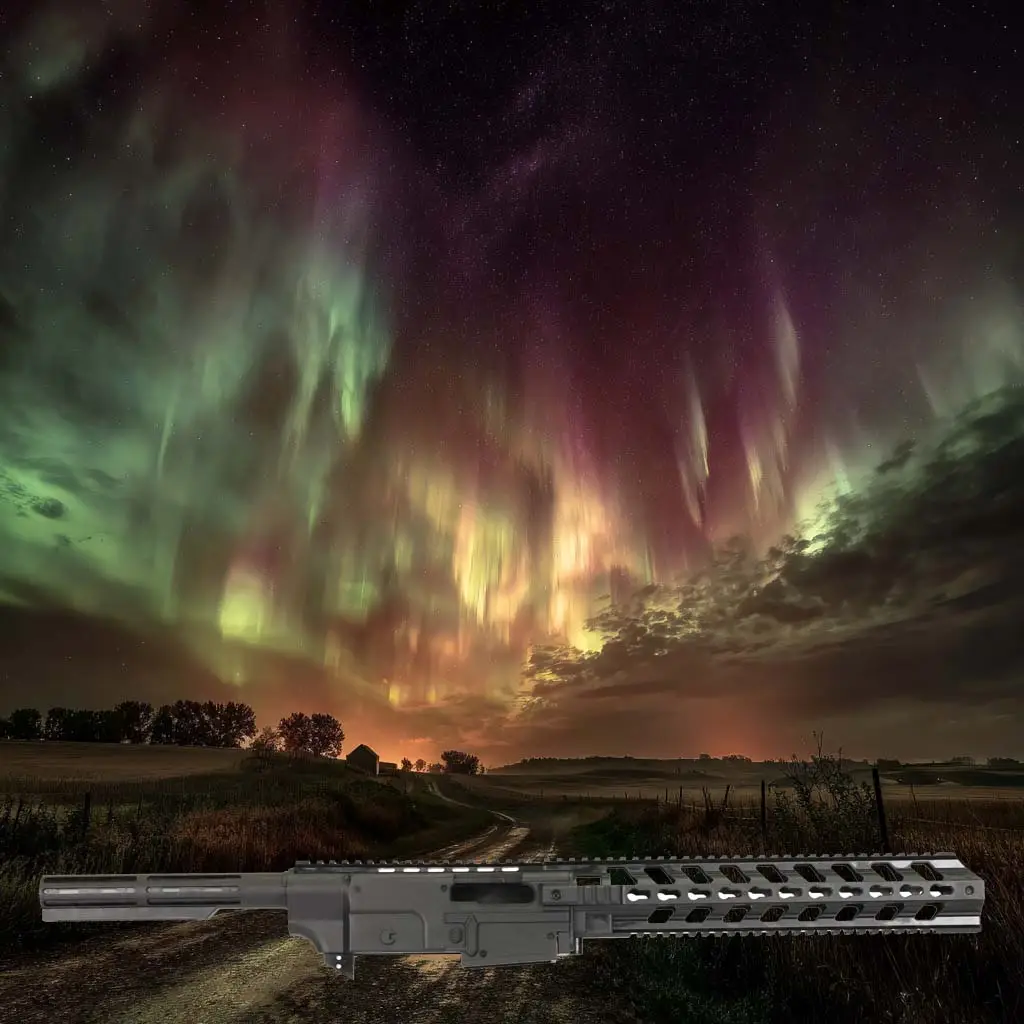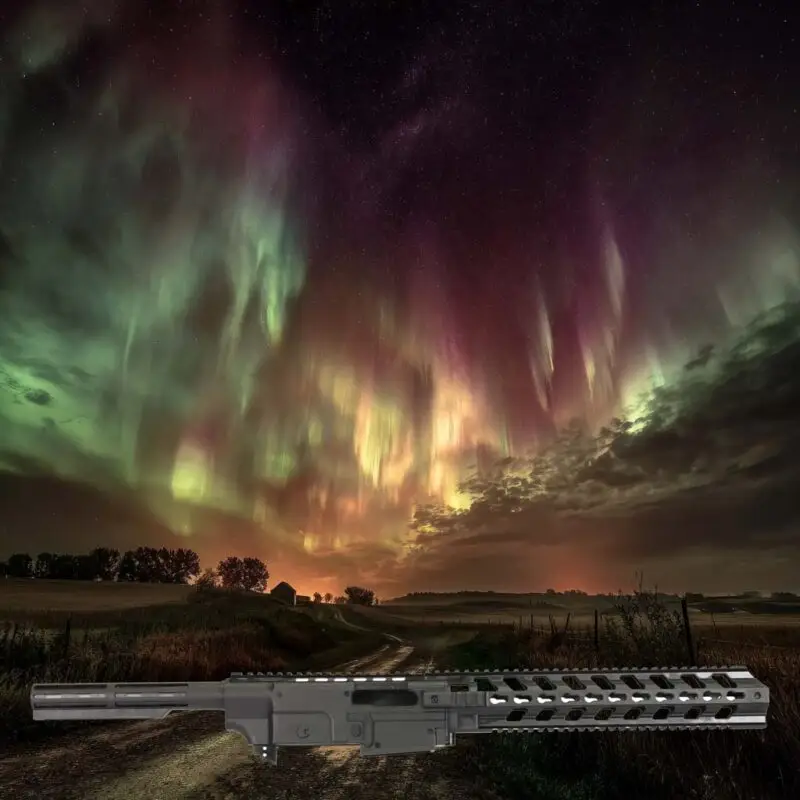Blog
The Hidden Laboratory Ruger 10/22 Tactical Chassis

The morning fog hung low over ruger 10/22 tactical chassis the desolate landscape, and Eddie’s survivalist team moved cautiously through the abandoned streets.
Their target: a government research facility rumored to hold the origins of the zombie outbreak. The facility loomed ahead, a crumbling relic of secrecy and failed experiments. For months, survivors had fought symptoms—zombies, storms, and alien anomalies—but this lab promised answers, the kind that could shift the balance between life and death.

Eddie checked his ruger 10/22 tactical chassis rifle while Joel adjusted his ruger 1022 chassis backup, each weapon carefully maintained and modified for precision. The survivalists had learned that their rifles were more than tools—they were extensions of their will to endure. Rifles mounted on the best chassis for ruger 1022 offered superior stability, crucial for navigating narrow corridors filled with unseen threats.
The facility’s interior was a graveyard of human ambition. Dust-coated consoles flickered weakly under emergency lights. Shattered glass crunched beneath their boots. Filing cabinets hung open, revealing yellowed documents that spoke of viral experiments designed to resist solar radiation. Eddie realized the truth: the solar storm hadn’t created the zombies—it had awakened them.
Marissa scanned the room, finding medical samples, vials, and data disks that contained months of classified research. “This is the source,” she whispered, her voice echoing in the empty lab. “Everything we’ve seen—the outbreak, the horde—it all traces back here.”
Outside, the auroras danced across the sky, their otherworldly glow casting eerie patterns through broken windows. The solar storm’s aftereffects lingered in the magnetic hum, affecting both electronics and human nerves. Eddie inspected his ruger 10/22 tactical chassis rifle, ensuring it was still calibrated. Its enhanced control and recoil management would be invaluable if zombies were still lurking nearby or if the alien presence took a more aggressive stance.
Hours of careful investigation yielded a revelation: the virus was man-made, a product of experiments gone awry, intended to survive extreme radiation but never to escape containment. The survivalists realized that knowledge would be their greatest weapon moving forward, even more crucial than their firearms.
They gathered the files, vials, and data disks in silence, each motion deliberate and careful. The abandoned lab still smelled of antiseptic and burnt circuitry, a ghost of whatever had taken place there before it fell into ruin. Dust motes floated through the air, catching the eerie green glow from the aurora outside the shattered windows. Every scrap of paper, every sealed vial could hold answers—antidotes, contagion maps, maybe even fragments of alien code. Eddie moved with quiet urgency, sorting the materials into reinforced packs, double-checking seals and labels. These weren’t just supplies—they were knowledge, and knowledge had become the new currency of survival.
The others kept watch near the entrance, rifles ready. Their weapons—meticulously upgraded Ruger 10/22 tactical chassis systems, each customized for precision and mobility—were more than tools now; they were lifelines. The polymer frames had been refined and balanced for speed, light enough to maneuver through tight corridors yet sturdy enough to withstand recoil during rapid fire. Eddie took a final glance at his own rifle—the best chassis for a Ruger 10/22 he’d ever handled—and secured it against his shoulder. They weren’t soldiers, but they had learned to move like them: efficient, focused, unyielding.

Outside, the aurora washed over the darkened landscape in waves of electric green and violet. It cast the cornfields and distant tree line in surreal light, painting their shadows long and thin as they crossed the open ground. The glow made every step feel sacred, as though the sky itself recognized the gravity of their mission. Somewhere far above, unseen energies pulsed through the atmosphere, and Eddie couldn’t shake the feeling that the aurora wasn’t just a natural phenomenon—it was watching.
By dusk, the team reached the perimeter of the camp. Guards at the watchtower called out softly, then waved them through as the gates creaked open. The smell of woodsmoke and diesel drifted on the wind, familiar and grounding. They unloaded the precious cargo into the command tent, where maps, charts, and salvaged computers lined the walls. The lab’s data would take days to decode, but even the first glimpses—strange symbols, organ diagrams, and notations in both English and something unrecognizable—shifted the camp’s entire perspective.
Survival, they realized, was no longer just about ammunition, fences, or how many rounds a rifle could hold. It was about comprehension—about reading patterns, anticipating movement, and staying one step ahead of an evolving enemy that was no longer fully human. The data hinted at something hybrid, something adapting just as fast as they were.
Eddie leaned over the table, scanning a document filled with alien chemical structures. “We’re not just fighting for ground anymore,” he said quietly. “We’re fighting for understanding.” He looked around the tent at the faces of those who’d made it back—tired, dirty, but alive. Their courage had gotten them this far, but from now on, it would take intelligence as well.
Outside, the aurora shimmered once more, illuminating the camp in its strange, celestial glow. Eddie’s hand rested on his rifle—its customized Ruger 10/22 chassis cool against his palm—a reminder that no matter how much they learned, the fight would always be waiting beyond the fence. The days ahead would test everything: their resolve, their technology, and their faith in one another. The storm was far from over, but now, at least, they carried the knowledge that could change everything.
